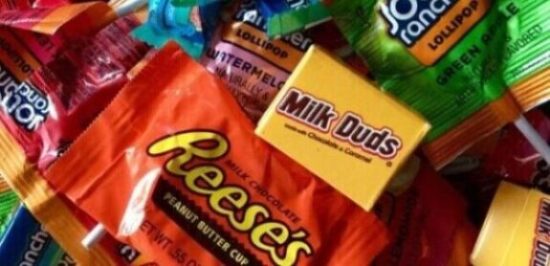
It’s a night when we willfully indulge children in alarming amounts of things we call treats. Halloween is a lot of fun for kids, and for adults too. But otherwise intelligent people are facilitating the celebration of a tradition that has swerved in the wrong direction.
What could be high-quality, entertaining time together for parents, children, and neighbours is instead the occasion for collection of the lowest-quality chocolate bars, candies, and other tooth-rotting, high-calorie junk.
Halloween has become a hallmark holiday for getting it wrong. We succumb to harmful market forces, misguided commercialized interests, and risky behaviours. We’re not stopping to think. And we’re not finding ways to elevate the voices of those who are putting forward better approaches to health, happiness, and preservation.
Sure, it can be nice to see homes lit up with Halloween lights, adorned with decorations and all kinds of scary elements to widen the eyes of marauding children. But not so when birds, bats, and other wildlife are being caught and killed in decorative webs of sticky string in trees. How much of the cheap, plastic ghosts, devils, bats, and broomsticks end up in a landfill each year?
It might be surprising to know that every Halloween, thousands of children require visits to the emergency room because they have cut themselves badly when carving a pumpkin. And it’s tragic that the risk to children of being fatally killed in a roadside accident increases by a factor of ten on the night of October 31.

The evening’s haul of candy means more dentists bills. But it’s not just teeth at risk. The tidal wave of refined sugar that floods young bodies affects insulin response, mood, and sleep. It’s a youthful kickstart in health erosion. Yet year after year, we do the same thing, smiling as we hand over the very substances that prime children for poor habits and chronic disease. It’s the devil’s gift: a pillowcase full of candy.
But there are people trying to make Halloween better. Some nutritionists, educators, and community leaders are reimagining the holiday. Some parents hand out toys, stickers, or healthier snacks instead of candy.
Others organize neighborhood scavenger hunts, outdoor games, or lantern walks where the focus is on adventure, not consumption. But a billion-dollar industry still saturates screens, shelves, and minds. Those who are trying to make change can fight for attention, but they have little hope of winning.
Is there any chance of shaming corporate powers? Not likely. Witness the big tech companies, long under pressure, but only now taking small steps to protect young minds from the digital junk food of social media. It’s too little, too late. And profitability remains the goal, not the health of individuals or society.
What can we do? We can choose to make the night about imagination, not ingestion. Teach children that dressing up, exploring the neighborhood, and telling spooky stories can be just as thrilling as counting candy bars. Buy decorations that last. Use LED candles instead of real flames. Avoid fake spider webs that trap wildlife.
And when it comes to treats, keep a balance: maybe a few sweets, but also healthier surprises, or better yet, experiences. Homemade costumes, joke cards and skits, genuine connections with neighbours.
Halloween can be about creativity, not consumption. If we shift even slightly each year, the next generation might inherit something better – a night of wonder that doesn’t reward kids with garbage food, more plastic waste, and preventable injuries. The ghosts and goblins of Halloween should be pretend. The harm doesn’t have to be real.
This column offers opinions on health and wellness, not medical advice. Visit www.docgiff.com to learn more.
For comments, diana@docgiff.com. Follow on Instagram @diana_gifford_jones
~ Image from PxHere

